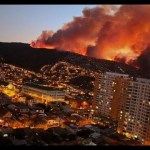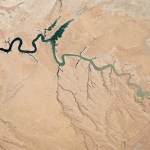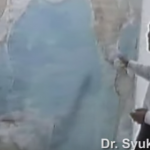drought
There have been significant wildfires in Chile since November, and they continue. These are the worst fires Chile has seen in known history, and Chile has been keeping track of its history for quite a while.
Are these fires climate change caused? Apparently so. Chile has had a rain deficit for well over a decade, though it as been extra dry for about five years. Drought experts call it a "mega-drought." Droughts tend to have climate change links, and this one is no exception. A study from just one year ago links anthropogenic climate change to the drought.
Within large uncertainties in…
Donald Trump speaking in Fresno, California, May 2016
Clinton on Western Water
Trump on Western Water
“Recognizes that the current long-term drought across much of the West poses a dire risk to the health and prosperity of Western communities and believes the federal government can and should be a better partner in supporting state and locally-led efforts to improve water security.”
“There is no drought. They turn the water out into the ocean.”
Explicit policy proposals:
Increase federal investment in water conservation through a coordinated, multi-agency Western Water Partnership…
Diablo Canyon Nuclear Power Plant, courtesy PG&E
The announcement that Pacific Gas and Electric (PG&E) will close the Diablo Canyon Nuclear Plant when its current operating licenses expire in 2025 has caused what can only be described as consternation mixed with occasional conniptions among the nuclear industry and some strongly pro-nuclear groups.
That’s understandable. Diablo Canyon is aging, but is not the oldest nuclear plant in the fleet and PG&E could have chosen to push for a renewal of the license to continue operations for many more years. Diablo Canyon’s two reactors…
On Significant Figures, Peter Gleick explains that growing populations worldwide have exerted peak pressures on water supplies, leaving entire regions more vulnerable to natural variations in rainfall. In turn, global warming has made these natural variations more extreme. One such variation is El Niño, when "droughts are typically more widespread and severe." Dr. Gleick reports on the challenges faced around the world in 2016, as several historic droughts grow worse. Meanwhile, in honor of Earth Day, Ethan Siegel suggests we count our blessings: "there’s still no planet as friendly to life…
Populations around the world face many severe water challenges, from scarcity to contamination, from political or violent conflict to economic disruption. As populations and economies grow, peak water pressures on existing renewable water resources also tend to grow up to the point that natural scarcity begins to constrain the options of water planners and managers. At this point, the effects of natural fluctuations in water availability in the form of extreme weather events become even more potentially disruptive than normal. In particular, droughts begin to bite deeply into human well-being…
On Pharyngula, PZ Myers doesn't just want cut your grass—he wants to tear it out by the roots and leave it to rot in the sun. He quotes J. Crumpler on The Roaming Ecologist, who calls lawns "sterile, chemically-filled, artificial environments [...] that provide no benefits over the long term; no food, no clean water, no wildlife habitat, and no foundation for preserving our once rich natural heritage." To make matters worse, lawnmower use adds carbon dioxide to the atmosphere, while beautiful bermuda grass requires a lot of H2O in a world that is increasingly insecure about water. During the…
There is a new study out in Nature that is liable to be misinterpreted, or that may be flawed in a way that lends itself to misuse, in the context of climate science driven policy.
The study is "Northern Hemisphere hydroclimate variability over the past twelve centuries" by Fredrik Charpentier Ljungqvist, Paul J. Krusic, Hanna S. Sundqvist, Eduardo Zorita, Gudrun Brattström & David Frank
I'll make just a few comments here, but mainly, I want to point you to comments by climate scientist Michael Mann (author of The Hockey Stick and the Climate Wars: Dispatches from the Front Lines and…
By Peter Gleick, Brett Walton, J. Carl Ganter
Water was a Top Risk on the 2015 Global Agenda
In early 2015, participants at the World Economic Forum, a who’s who of the political and business elite, ranked water crises as the top global risk. Water was also a key factor in the adoption by the United Nations General Assembly of the Sustainable Development Goals (SDGs), a blueprint for international development over the next 15 years. Ensuring safe drinking water and sanitation for all by 2030 is one of six water goals for the SDGs. In December at the UN climate change conference in Paris,…
(Photo: Peter Gleick 2008)
The recent severe drought in the Western United States -- and California in particular -- has shined a spotlight on a range of water-management practices that are outdated, unsustainable, or inappropriate for a modern 21st century water system. Unless these bad practices are fixed, no amount of rain will be enough to set things right. Just as bad, talking about many of these bad practices has been taboo for fear of igniting even more water conflict, but the risks of water conflicts here and around the world are already on the rise and no strategy that can reduce…
Check this out:
Hat tip, Peter.
Heather Cooley, Kristina Donnelly, Peter Gleick
Last week, the Pacific Institute published the first comprehensive analysis of the impacts of the drought on California crop revenue and agricultural employment through 2014. The study showed that during the recent drought California’s agriculture sector experienced record-high crop revenue and employment. Crop revenue peaked in 2013 at $33.8 billion, the highest level in California history, and declined only slightly to $33.4 billion in 2014 (all economic data have been corrected for inflation). Statewide agriculture-related jobs also reached a…
Heather Cooley and Peter Gleick
California is in a severe drought – four years long now. But what does the drought really mean for the things we care about: food production, fisheries, industrial activities, rural communities? As part of the work of the Pacific Institute to evaluate both the impacts of water problems and identify smart solutions, we’ve just released the first comprehensive assessment of the actual impacts of the drought for California agriculture.
Many commentators and analysts have worried especially about California’s agricultural sector, which is a major water user and has…
What's worse than months or years without rain? Rain, after months or years, at least under some circumstances.
For instance ... it gets try, plants become vulnerable to fire. Fires happen denuding the dry landscape. Then it rains, and you get more severe floods together with landslides. You know the story because for years this has been the pattern in California.
But there is another roughly similar, or at least analogous, problem that is now being discussed. The levees that are mean to keep floodwaters contained in California were already in fairly bad shape. Prior to the drought, a…
by Peter Gleick and Heather Cooley
Debates about water in California, the western U.S., and indeed, worldwide, have traditionally focused on the question of how best to further expand water supply to meet some hypothetical future increase in water demand. And the solution frequently offered is to build massive new infrastructure in the form of dams and reservoirs, drill more groundwater wells, or expand water diversions from ever-more-distant rivers, in order to “grow” the supply available for human use.
“Build more traditional water infrastructure” is increasingly the wrong answer to the…
Humans have been releasing greenhouse gas pollution into the atmosphere for a long time now, and this has heated up the surface of the planet. This, in turn, has caused a number of alarming changes in weather. Several current weather events exemplify the effects of climate change.
Record High Temperatures Being Shattered
South Asia recently experienced a number of killer heatwaves, and that is still going on in the region. More recently, we've seen long standing record highs being broken in the American West. The Capital Climate group recently tweeted this list of records:
Hot Whopper…
It’s only natural that during a crisis we look to single, “silver bullet” technical solutions, after all, they are supposed to be effective against werewolves, witches, and other monsters. For monsters like the ongoing severe California drought, the current favorite silver bullet is seawater desalination. And why not? California sits at the edge of the largest body of salt water in the world – the Pacific Ocean – and taking salt out of water is a successful, commercial, well-understood technology.
Look at how Israel has solved their water problems by building desalination plants, we’re…
[As part of the Pacific Institute’s ongoing efforts to evaluate the impacts of the California drought and offer strategies, technologies, and policies to reduce those impacts, we are presenting a series of short assessments on “Understanding the Numbers.” This piece is the part of that series.]
California is a wonderful place to grow food. The climate is highly favorable; soils are some of the best in the world, it is located well to serve global distribution markets with major ports and other transportation infrastructure; and normally, some regions are relatively well-watered.
Normally.
In…
California’s hottest and driest drought in recorded history has shifted the sources of electricity with adverse economic and environmental consequences. The Pacific Institute has just completed and released a report that evaluates how diminished river flows have resulted in less hydroelectricity, more expensive electricity from the combustion of natural gas, and increased production of greenhouse gas emissions.
The current severe drought has many negative consequences. One of them that receives little attention is how the drought has fundamentally changed the way our electricity is produced.…
By Peter Gleick (Pacific Institute) and Carl Ganter (Circle of Blue)
1. The California Drought Becomes an Emergency
California’s multi-year drought grew dire enough in 2014 to prompt Governor Jerry Brown to declare a drought emergency in January. By the end of the year, California had experienced the driest and hottest 36 months in its 119-year instrumental record. Some researchers described the drought as 1) the worst in over 1200 years and 2) evidence of rising temperatures globally as climate changes accelerate. As of mid-January, the drought is continuing.
As the California and…
The California drought continues.
While we do not know yet what the rest of the wet season will bring – and while we hope for the major storms needed to recharge our rivers, groundwater and reservoirs – it seems increasingly likely that California will not see enough precipitation to get out of the very deep deficit that three years of drought (so far) have produced.
There is, however, some misleading and confusing information out there. Some are already arguing that California’s rainfall is nearly back to normal or that because there may have been more serious droughts in the past we needn’t…






